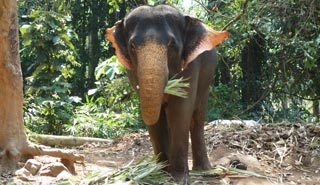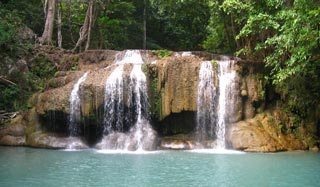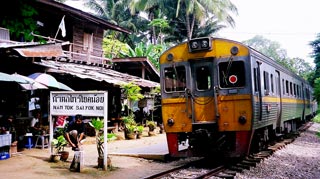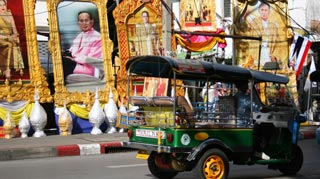JEATH War Museum
The acronym JEATH stands for the main nationalities involved in the construction of the railway: Japanese, English, Australian, American, Thai and Holland. The museum aims to recreate the quarters used by the Allies POWs and give an insight into their lives by showing the conditions and tools they used, along with paintings, drawings and photos of and by former prisoners. There are horrific scenes of skeletal prisoners working with pickaxes, with others lying on bamboo beds in the final throes of life. These crude bamboo sleeping areas are an accurate representation of how the prisoners worked, slept and died. One painting depicts a prisoner begging for food from the man lying alongside. "Let me have his, he's dead!" the man says. There are also many actual photographs of Japanese soldiers who lived in Kanchanaburi during the war. Their healthy, well-nourished countenances are in sharp contrast to the POW's dying of hunger and exhaustion nearby. There's not too much to see besides the art depictions, photos and an eclectic collection of war mementoes, but it's quite harrowing for all that. If you’re desperately short on time go with the Death Railway Museum, if you have enough time it’s definitely worth the low entry fee to get a feel for what the workers were put through. The JEATH museum is run by the monks of the adjacent Wat Chaichumphon (Wat Tai), which is also worth a wander because it has many interesting statues and shrines, including one fashioned from a WWII-era boat which was dredged out of the river. Entry: 40B Open: Daily 8:30am - 6:00pm Tel: +66 34511263 Getting Here: Located on the river just south of the town centre, within walking distance of most riverside guesthouses.
Kanchanaburi
Kanchanaburi
























